MONASTIC SOJOURNER
Every year from 6 to 14 Feb a Navaratri Celebration is held in Swami Vivekananda House, Chennai. This is in commemoration of Swami Vivekananda’s 9-day stay in Castle Kernan (now Swami Vivekananda House) after his triumphant return in 1897 from his first visit to the West.
In the course of these nine days Swamiji interacted with a number of people and delivered four talks which gave a new direction to India. A day-wise account of this historic Navaratri is presented here.
Day One (6 February, Saturday)
At about 7.30 am the train carrying Swamiji arrived at the Egmore railway station where he was received by the Reception Committee members, Swamis Niranjanananda and Shivananda, and some western disciples of Swamiji. He was brought to Castle Kernan in a huge procession marked with unprecedented enthusiasm. After the Swami had taken food and had a short rest, Professors K. Sundararama Iyer and M. Rangacharya met him to arrange a programme for his stay in Madras. The Swami asked them to arrange the programme between themselves and simply inform him of the subjects he was to speak on.
It was settled that his first appearance would be to reply to the main address of welcome presented on behalf of the people of Madras by the Vivekananda Reception Committee. Afterwards there were to be four public lectures devoted to his message to the world and to India, and to the means of building up a national spiritual life in India suited to altered conditions. The following subjects were chosen: (1) ‘My Plan of Campaign’ (2) ‘The Sages of India’, (3) ‘Vedanta in its Application to Indian Life’, (4) ‘The Future of India’.
At Alasinga’s request, the Swami also consented to deliver a lecture at the Triplicane Literary Society on ‘The Work Before Us’; and there were to be two morning sessions at the Castle when people could put questions to him.
The Raja of Khetri, devoted disciple of Swamiji, sent his Private Secretary, Munshi Jagmohanlal, all the way to Madras to present an address of welcome on his behalf. From the first day to the last of his visit he was besieged at all hours by visitors of all classes, both men and women. There were crowds constantly waiting in front of the Castle at all hours of the day and even after dusk.
The Indian Mirror, a Calcutta paper which carried excerpts from Madras papers, gave this account of the scene at Castle Kernan, with special reference to February 6 and the early morning gathering on the 7th:
Castle Kernan, where Swami Vivekananda is lodged, presented a picturesque scene on Saturday evening [February 6]. The Castle itself is beautifully decorated and fitted up for the reception of Swami and party…. Two magnificent pandals have been put up, one at the entrance, which is intended to serve a purely ornamental purpose, and another in the compound, which serves the purpose of a meeting hall, where the Swami patiently undergoes the severe cross-examination to which he is subjected on the technicalities and subtleties of the Vedanta. A large number of gentlemen waited upon the Swami at the pandal that evening, when an acrostic poem in Sanskrit in honour of the Swami was read out by Mr. R. Sivasankara Pandiya. The Swami then offered to answer any questions that might be put to him. Someone set the ball rolling by asking the Swami to point out the difference between karma and fatalism….
Mr. P. L. Narasu then heckled the Swami on the essential tenets of the Vedanta. A most interesting passage-at-arms then followed, the Swami dealing with his interrogator’s various points with admirable lucidity, force, and aptness…
Day Two (7 February, Sunday)
In the same issue of the Indian Mirror is another report which would seem to relate to a session between 7.30 and 9 a.m. on the following morning, Sunday the 7th:
Nearly two hundred persons assembled this morning… at Castle Kernan to question Swami Vivekananda on various topics of interest. Some asked him to explain the difference between ‘mind’ and ‘matter’, some others wished to know whether God had a human shape. Swamiji patiently and courteously answered all his questioners….
In the evening, about 4 p.m. he set out from Castle Kernan. It was a day of high expectations for everyone. Over ten thousand people had assembled in and around the Victoria Hall. The scene in front of it, and along the roads and streets leading to it, defied description. The carriage taking the Swami and his party could scarcely pass; so dense was the crowd. As they alighted, there were loud cries of ‘Open-air meeting’ from the vast throng that had assembled. The arrangement was that the address would be presented in the hall. This, of course, was filled to capacity. With great difficulty the Swami made his way to the platform. Sir Bhashyam Iyengar was already in the chair; and the Swami took the seat by his side.
Meanwhile, loud and continuous shouts of ‘Open-air meeting’ from outside interrupted the proceedings within. The Swami’s heart was touched; he felt that he could not disappoint the countless, eager young men assembled outside. He suddenly burst out, saying, ‘I am a man of the people. They are all outside. I must go and meet them’, and rushed from the hall. As soon as he appeared outside, thundering applause broke forth. Then there was a stampede. Since no prior arrangements had been made for him to address the people in the open air, he got on a landau [a four wheel covered carriage with a roof—front and back—divided into two parts that can be let down separately] and tried to speak from that. The noise was so deafening that he could not make himself heard. So he climbed into the coachman’s seat, and spoke in Gita fashion, as he put it. He had in mind, of course, Sri Krishna’s delivering his message in a chariot ages before.
‘Man proposes and God disposes’, he began. ‘It was arranged that I should address you in occidental fashion; but it was ordained by the Lord that I should address you in Gitafashion, standing in a chariot. . . .He went on to tell his hearers that he was intensely pleased with their enthusiasm: only let them ‘keep it up’; let them give him all the help he required, ‘to do great things for India’.
At this stage the crowd became so unmanageable that the Swami could not make himself heard. He finally said, ‘You have seen me today: you will hear me some other day.’ And it was true that, though there was disappointment at the sudden termination of the meeting, those who had come had had the satisfaction of having seen the Swami.
After this meeting, the Reception Committee, with the consent of the Swami, decided that, as it was impossible to control the big crowd, admission to his remaining lectures should be regulated by tickets to be issued on payment; admission will be by tickets to be had from Messrs Srinivasa Varadachari and Co. Rates of admission: Rs. 2 for the platform and Re. 1 for the Hall. The proceeds were aimed to be used for Swamiji’s work in India.
Day Three (8 February, Monday)
At about noon, Swamiji briefly spoke to Prof. P. Lakshmi Narasu, a scholar and Mr. N. K. Ramaswamy Iyer, and in the afternoon, a group of Shaivites from Tiruppattur in Tamilnadu.
Day Four (9 February, Tuesday)
In the morning Swamiji visited the Triplicane Literary Society at the request of its members. An address of welcome was read by T. V. Seshagiri Iyer, Vice-President, in which Swamiji’s attention was drawn to the fact that before to his departure for America his first public appearance had been in the hall of the Society. It was because of that that the citizens of Madras had been able to value the Swami at his true worth. After thanking the Society for having afforded him the opportunity of making himself known to the people of Madras in 1893, he spoke of the need of giving up narrow mindset and reaching out to western nations with the gift of spirituality and wisdom which India has. The subject of this talk was ‘The Work Before Us’. Although no notice had been given of it in the press, a very large crowd thronged the Society’s premises.
That very evening in the Victoria Hall, the Swami gave the first of his four public lectures: ‘My Plan of Campaign’. He said: ‘My plan is to start institutions in India, to train our young men as preachers of the truths of our scriptures, in India and outside India. Men, men, these are wanted’—sincere to the backbone. . . A hundred such and the world becomes revolutionized.’
Day Five (10 February, Wednesday)
In the evening, Swamiji attended an at-home held in his honour at the premises of the Social Reform Association, in Black Town. A handsome fan was presented to him as a memento of his visit. In his conversation with the members, he gave little or no encouragement to the revolutionary views entertained by the society’s leaders, but ‘admitted the need for social reforms’, such as the removal of untouchability, the restoration and rearrangement of the caste system so as to recover its ancient rationale, and so on.
Day Six (11 February, Thursday)
In the morning, Swamiji went on invitation to the house of Dr Subrahmanya Iyer, in Luz Church Road. Prof. Sundararama Iyer, who was present, writes:
‘We met in the room upstairs, and the Swami explained to us his plans for a vast religious reformation and revival in India which would serve to bring Hindus, Christians, Mohammedans, Buddhists, and all under a common flag of brotherly union and serve as a star of hope and harmony, and a ceaseless incentive to the striving by men of all creeds and colours after a common goal of national aspiration. He wanted a new sort and style of temple with a hall in the front containing statues of the sages and prophets of all great religions, and behind it an inner precinct containing a pillar with the letter (or letters) Om inscribed on it and underneath the open sky….’
In the evening, Swamiji delivered his second public lecture, The Sages of India, in the Victoria Hall. The place was crowded to capacity.
Day Seven (12 February, Friday)
In the morning itself, the pandal at the Castle was full to overflowing, when Swamiji took his seat on the platform. There came a young European lady of high intelligence, who put to him various questions on Vedanta. The Swamiji’s resources of knowledge and exposition were fully brought out to the wonder of all present. The lady thanked Swamiji, told him that she would be leaving for London to resume her social work in its slums, and hoped that it would be her great privilege to meet him again. As she left, Swamiji rose, advanced a few steps to see that a way was made for her, and remained standing while she bowed and retired. In the afternoon she returned with her father, who was engaged in Christian missionary work in Madras. She sought and obtained for him an interview which lasted nearly an hour. On being asked by Prof. Sundararama Iyer how he found the strength for such incessant activity, the Swami said, ‘Spiritual work never tires one in India.’
On the same day a Vaishnava pundit, speaking in Sanskrit, raised a difficult point in the Vedanta for discussion. The Swami patiently listened to the pundit, then turned to the audience and said in English that he did not care to waste time in fruitless wrangling over doctrinal details of no practical value. The pundit then asked the Swami to say clearly whether he was an Advaitin or a Dvaitin. The Swami replied in English: ‘Tell the pundit that so long as I have this body I am a Dualist, but not afterwards. This incarnation of mine is to help to put an end to useless and mischievous quarrels and puzzles which only distract the mind, and make men weary of life, and even turn them into sceptics and atheists.’ The pandit then said in Tamil, ‘The Swami’s statement is really an avowal that he is an Advaitin.’ The Swami rejoined, ‘Let it be so.’ The matter was then dropped.
In the afternoon at about 4.30 p.m., Swamiji and friends visited the Hindu Theological High School of Madras. First, two boys conversed with one another in Sanskrit on Arya Dharma.
Then the Founder-President, Brahmasri R. Sivasankara Pandiya, read an address on behalf of the trustees, teachers and boys of the school. The Swami congratulated the FounderPresident on his noble endeavours. He exhorted the public to encourage the school in every way, and wished for similar institutions to come up all over India. The Hindu Moral Association also presented an address.
In the evening, the Swami presided over the annual meeting of the Madras Chennapuri Annadana Samajam, held in Pachaiyappa’s Hall. After the usual proceedings the Swami spoke a few words on charity.
Day Eight (13 February, Saturday)
In the evening, Swamiji addressed a very large audience in Pachaiyappa Hall on ‘The Vedanta in Its Application to Indian Life’. He said that Hindu religion is a collection of various religions, of various ideas, of various ceremonials and forms, all gathered together almost without a name, and without a church, and without an organization. The only point where all the sects agree is that they all believe in the Vedas. No man can be called a Hindu who does not admit the supreme authority of the Vedas. The Vedanta covers Dualism, Qualified Monism, and Monism or Advaita, and even takes in part of Buddhism and Jainism too.
Prof. Sundararama Iyer relates an amusing incident that happened during the lecture just summarized. Among those on the platform was G. Subrahmanya Iyer, who was later to become editor of The Hindu. At one point, particularly addressing the students in the audiences, the Swami said: ‘First of all, our young men must be strong. Religion will come afterwards. Be strong, my young friends;… You will be nearer to Heaven through football than through the study of the Gita…. You will understand the Gita better with your biceps, your muscles, a little stronger……’ Even while the Swami was speaking, Subrahmanya Iyer exclaimed in Tamil to those near him, ‘I have said the same thing often, but none would give ear. The Swami says it now, and you all cheer!’
The same evening, after the lecture, the Swami attended an entertainment given in his honour by L. Govindas, at Patters Gardens, Royapettah. The large gathering included quite a few Europeans. After addresses had been read out, there was a recital by two wellknown musicians. Swamiji was presented with ochre-coloured silk cloths, garlanded, and served with refreshments.
The biography of Lodd Govindas who was an eminent businessman belonging to Gujarati community in Madras, and a wellknown public figure, records Swamiji’s visit to his place thus:
When His Holiness Swami Vivekananda, who has acquired a world-wide fame for his thrilling eloquence in preaching Hinduism, arrived in Madras from England, Mr. Govindas gave him an entertainment in his bungalow ‘Patters Gardens,’ and presented him with an address which contained many valuable and practical suggestions in connection with the furtherance of unanimity among Hindus as a whole in point of religion, which virtue is now a rare commodity among them. We subjoin the address:
‘With due regard and pious holiness, I beg to approach your Holiness. You have undertaken a duty at once most pious, thoroughly unique and highly exemplary. The most heavy task you have self-imposed with an utter denial of the inner cravings of all comforts of man, you have discharged so creditably to the Arya Varta that persons of all clime, caste, colour, and creed, bear abundant testimony to the same. The commanding genius you possess, the thrilling eloquence you display, the fiery zeal in the holy cause you have undertaken, have won already the admiration and respect of the civilized American and the large brained European and unmistakably point out to one conclusion that you are the fittest and greatest spiritual Hindu teacher for bringing the whole world under the banner of one religion you preach, with the motto written in glittering gold, of universal love and brotherhood. It is no exaggeration to say and to urge that in this age of philosophical doubt and obstinate perversity, you have established a name in the Eastern and Western hemispheres of the world (which none but those hallowed by holy touch of heaven could achieve). To be brief, in you is realised the existence of the connecting link between the East and the West, the North and the South, for spiritual development breaking down the prejudices, passions, and errors of the different established religionists from one pole to the other.
India is a land of diverse religions with manifold divisions and sub-divisions. The great religious luminaries that have flourished in the land, left behind them doctrines and tenets they held and preached in the form of Dvaita, Advaita, Visishtadvaita and Suddhadvaita.
Besides, there is jarring differences in religious observances among the inhabitants occupying the nook and corner of this vast peninsula. It is hardly necessary to mention that such petty feuds and differences have wrought and are yet to work out many woes among mankind.
It is, therefore, humbly suggested that the conception of a plan and the adoption of a contrivance to bring the Hindu religionists of heterogeneous views to one focus and to one common centre, will achieve the greatest good to the greatest number of people. A Parliament in the form of a Hindu Religious Congress may be held annually in some centre. The members of the Parliament shall form the representatives of the various sects, who, in their turn, should hold meetings in their respective localities with a fair and impartial criticism; one great object being to eliminate all the petty differences and to restore harmony, and peace between man on one hand, and the centre of moral and spiritual universe on the other. Proceeding on this broad basis, constitution may be formed with an everlasting ambition of peace and goodness ever resting and depending for success or failure upon the Supreme Will, “the great spring of love, beauty, order and intelligence”.’
Day Nine (14 February, Sunday)
In the evening Swamiji gave his last public lecture in Madras, on ‘The Future of India’. Over three thousand people had assembled in the Harmston Circus Pavilion to hear him. The Hon’ble N. Subba Rao Puntulu was in the chair. Prof. Sundararama Iyer says: ‘I never saw a more crowded scene or a more enthusiastic audience. The Swami’s oratory was at its best. He seemed like a lion traversing the platform to and fro. The roar of his voice reverberated everywhere, and with telling effect.’ That there was something special about this lecture, and that the Swami’s voice had a special power on this occasion is also suggested by C. Ramanujachari’s words: ‘That was a wonderful lecture and Swamiji’s voice was heard throughout distinctly, even in the corners. Those were days when there were no loud-speakers. The effect of that speech was thrilling.’
Almost from the commencement of his visit to Madras Swamiji was being pressed by his disciples and admirers to remain in the city and open a centre there. The topic was broached on his return to Castle Kernan from the abortive Sunday meeting. S. Subrahmanya Iyer and others were all seated round the Swami, discussing future action in Madras.
On the last day, V.Krishnaswamy Iyer, sometime member of the Madras Executive Council, requested Swamiji to send someone who could continue the work he had begun. Swamiji replied:
I shall send you one who is more orthodox than the most orthodox Brahmins of the South and who is at the same time incomparable in performing worship, scriptural knowledge and meditation on God.4
Later, Swamiji sent Swami Ramakrishnananda, his brother disciple and a direct disciple of Sri Ramakrishna. Needless to say, Swami Ramakrishnananda was a worthy messenger of his guru whose contribution to the spread of Ramakrishna Movement in South is immense.
Swamiji’s Departure from Madras: On Monday February 15, he embarked on S.S. Mombasa of the B.I.N.S. Company. A Shamiana (a canopy) had been put up on the harbour pier, which had been beautifully decorated, and Messrs Binny and Co. had arranged for a farewell gathering.
Swamiji reached the pier at 7.30 a.m. and was conducted to the Shamiana, where some leading citizens had assembled to say goodbye to him. A group of merchants of the Aryavaishya caste (known as Komatis) met him and presented an address of thanks for his services to the holy motherland. At 8 a.m. he entered one of the pier carriages and was pushed along to the T-end, where he was met by the Reception Committee and other friends. On alighting, he was garlanded, and then the Hon’ble Subba Rao, of Rajahmundry, on behalf of everybody present, wished Swamiji god-speed and a safe voyage. The Swami bowed in acknowledgement, and said that his silence would best express his feelings. He proceeded to embark amidst deafening cheers from those assembled on the pier and from the crowds on the beach.
Source : Vedanta Kesari, February, 2017

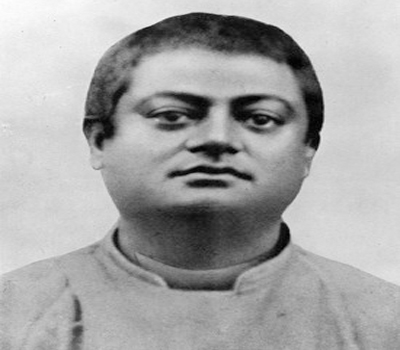
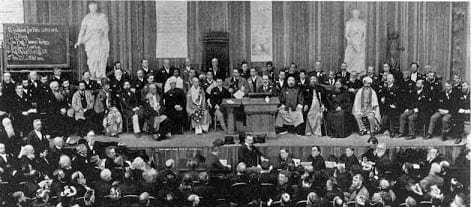

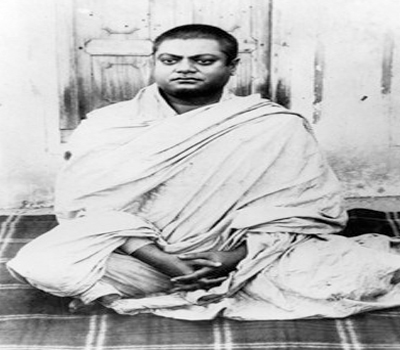
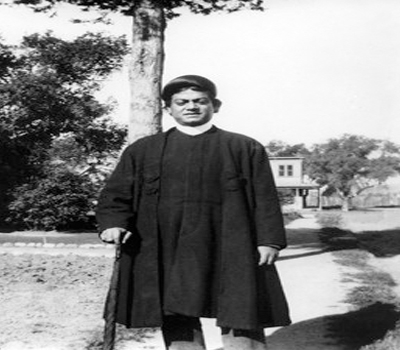
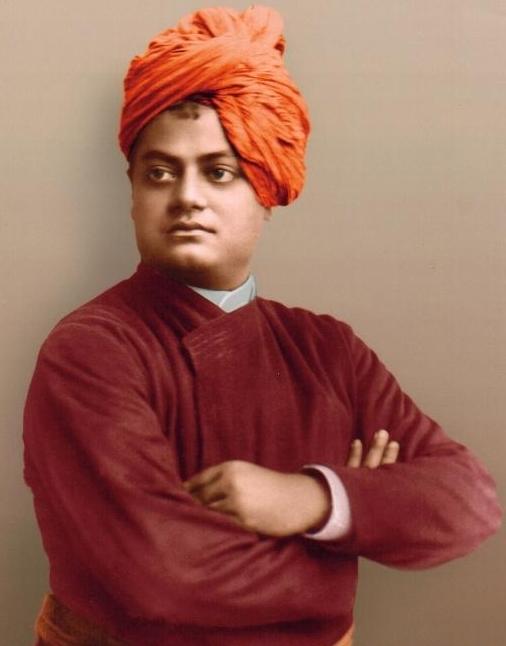
Leave A Comment